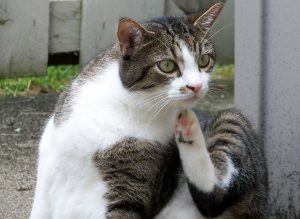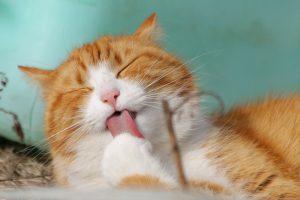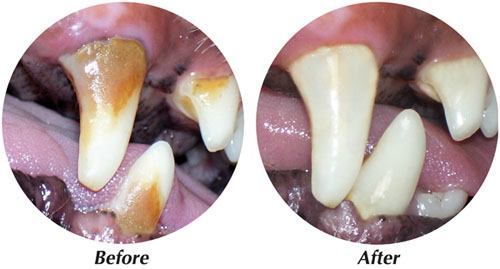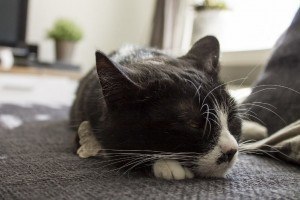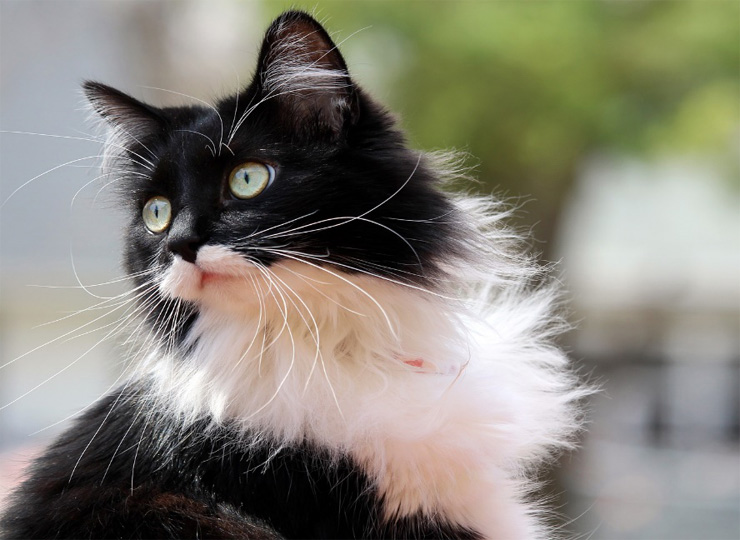
Feline Hyperthyroidism – The Basics to Know
Feline Hyperthyroidism
The Basics to Know
Feline hyperthyroidism is a very common health condition in aging cats. Because the thyroid hormone affects nearly every organ in the body, it can have very serious repercussions for untreated felines. In this article, you’ll learn the basics of the disease, along with symptoms to look out for, how it affects your cat’s health, and how it can be treated. By learning this, you’re putting yourself in a fantastic position to be able to look out for your loving companion!
A little background
Thyroid hormones have many essential tasks – such as regulating the body’s metabolic rate, heart and digestive function, muscle control and bone maintenance. Hyperthyroidism arises from an increase in the production of thyroid hormones due to an enlargement of the thyroid gland. This is usually caused by a non-cancerous tumor. When the corresponding excess of thyroid hormones is left untreated, especially for a long period of time, it will wreak havoc on several important systems inside your cat’s body. This is very serious, and can be life threatening.
Symptoms
- Weight loss
- Increased appetite
- Increased urination
- Increased thirst
- Increased fecal volume
- Shortness of breath
- Vomiting
- Diarrhea
- Hyperactivity
Secondary Conditions
Kidney Disease
There is strong evidence to suggest that feline hyperthyroidism leads to a significant increase in risk of kidney disease. Some studies suggest that up to 40% of cats with hyperthyroidism develop kidney disease. Troublingly, hyperthyroidism often masks the development of kidney disease, which can often allow the disease to progress to late stages without the pet owner knowing there was anything wrong.
The kidneys act as a filter for waste in your cat’s bloodstream. As kidney disease progresses, the kidneys progressively lose their ability to filter harmful toxins from the blood into urine. This causes a dangerous accumulation of should-be waste products in your cat’s bloodstream. Kidney failure is a common cause of death in aging felines.
When a cat has both hyperthyroidism and kidney disease, the treatment must be very delicate. This is because hyperthyroidism can actually improve kidney function through increasing blood flow to the kidneys. When hyperthyroidism is treated, the increase in blood flow vanishes, and the cat can suddenly appear to be very sick because the kidney disease is no longer masked. These cats need to be monitored very closely, and require extra cautious care strategies.
Heart Disease
When hyperthyroidism goes untreated for a long time, many cats begin to develop an enlargement of the left heart ventricle. The left heart ventricle is responsible for pumping blood into the circulation system through the aorta. If this is left untreated, it will eventually compromise the normal functioning of the heart. Sadly, this can ultimately progress to heart failure. Heart failure occurs when the heart’s ability to pump blood is compromised. It is always a serious and life threatening situation that requires immediate veterinary care.
Consequently, many cats who are treated for hyperthyroidism also require treatment for the secondary condition of heart disease. There is some very good news though – often times when the hyperthyroidism is treated, the cardiac conditions improve or even resolve completely!
Treatments
Medication
Anti-thyroid drugs do not cure hyperthyroidism, but they can be very useful in controlling the disease. These drugs work by reducing the thyroid hormone output from the thyroid gland. The advantage of going this route is that the medication is typically readily available and relatively inexpensive. However, this is not usually very practical lifelong treatment, as your cat will require multiple doses each day, which can be difficult to stick to with the regularity it requires.
Surgery
Removal of the thyroid glands is a relatively simple procedure that has a high success rate for curing hyperthyroidism. This can be an attractive course of action, as it eliminates the need for a long-term and intensive medication regiment. However, there may be added risks for older cats with secondary conditions (such as heart or kidney disease), which means this won’t be an appropriate course of action for some felines with hyperthyroidism. The procedure has an inherent risk of damaging the parathyroid glands, which have other crucial functions.
Radioactive Iodine Therapy
When possible, radioactive iodine therapy is quickly becoming the treatment of choice for cats with hyperthyroidism. Radioactive iodine is injected and absorbed into your cat’s bloodstream. This is fantastic, because the iodine is taken in by the thyroid glands but no other bodily tissues. The radiation destroys the defective thyroid tissue without damaging anything else, and most cats return to normal hormone levels within just two weeks of treatment. Radioactive iodine therapy is curative, has no serious side effects, and does not require surgery or anesthesia.
If you notice any symptoms of hyperthyroidism in your cat, or if you have any further questions about the disease and its complications, please contact us at (310) 517-1832. We’re always here for you!




















